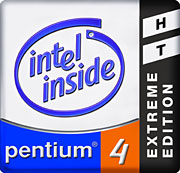 |
Intel Delivers Products, Technologies And Tools For The Digital HomeINTEL DEVELOPER FORUM, San Jose, Calif., Sept. 16, 2003 - Intel Corporation today showed how the digital home is becoming a reality with new products, technologies and services that move the industry closer to the goal of enabling consumers to enjoy content anywhere, anytime and on any device at home. During his keynote at the Intel Developer Forum, Fall 2003, Louis Burns, vice president and co-general manager of Intel's Desktop Platforms Group, discussed progress the industry has made on developing industry guidelines for distributing digital media in the home. He also previewed innovative new products, product designs and technologies for the digital home. He encouraged the computing, consumer electronics and entertainment industries to jointly make premium content available to consumers as the next step in delivering a true digital home experience. Burns demonstrated consumer products that are available today or will be in the near future. This included a high-definition video stream running on a previously unannounced desktop processor, the Intel® Pentium® 4 processor Extreme Edition 3.20 GHz supporting Hyper-Threading Technology1, with an additional 2 Megabytes of cache. This new processor will be targeted at high-end gamers and computing power users. "The industry has made great progress toward developing interoperability guidelines as well as innovative products and services that are helping make the digital home a reality for consumers," Burns said. "The next step in the digital home is enabling the availability of premium content on the home network, giving consumers access to the type of compelling content they want to enjoy. We're committed to continue to work with the consumer electronics, music and film industries to deliver the capability which, in turn, will create new business opportunities for all." Innovative Products for the Digital Home Intel today introduced the Intel® 815 Digital Set Top Box Reference Design, which delivers a powerful platform for software decode to enable a low-cost solution delivering video-on-demand over a broadband connection. The flexible platform will allow OEMs a fast time-to-market solution for the fast growing IP-video on demand market segment today, serving both digital homes, as well as the hospitality industry. The design allows service providers to add further optional services as they develop these market segments such as voice over IP and residential gateway/access point. The design can also be utilized for applications such as networked digital media recorders and personal video recorders. Products based on the Intel design are available from Wyse technology. Intel also showcased next-generation digital media adapters (DMAs), devices that wirelessly transfer personal digital video, photos and music from a PC to a TV and a stereo. The DMAs included iCube's Play@TV* and Lenovo's Media Link*. Emerging PC Technologies A new technology available from Intel in mid-2004, will help to simplify home networking by including a wireless access point and router functionality as an embedded feature of the PC to help minimize the need for external equipment or cables to build a small home network. Intel also previewed an instant on/off technology, allowing consumers to press the "on" button and the PC is ready in a few seconds. If the PC loses power, this technology quickly recovers without losing data or rebooting the PC under normal operation. Intel plans to include this technology on platforms in the next few years. Delivering Premium Content to the Home Tools for Developers About IDF Intel, Intel Pentium are trademarks or registered trademarks of Intel Corporation or its subsidiaries in the United States and other countries. * Other names and brands may be claimed as the property of others. 1Hyper-Threading technology requires a computer system with an Intel® Pentium® 4 processor with HT Technology, a chipset and BIOS that utilize this technology, and an operating system that includes optimizations for this technology. Performance will vary depending on the specific hardware and software you use. See www.intel.com/info/hyperthreading for information. 2Look for systems with the Intel® Pentium® 4 Processor with HT Technology logo which your system vendor has verified utilize Hyper-Threading Technology. Performance will vary depending on the specific hardware and software you use. See http://www.intel.com/info/hyperthreading/ for information. |
